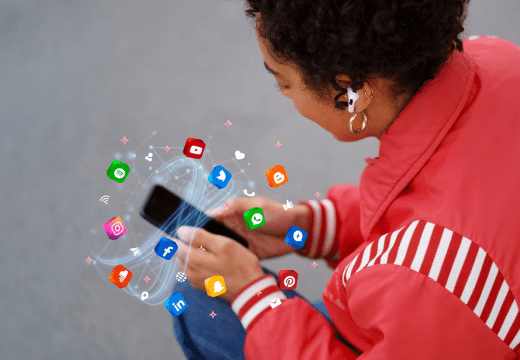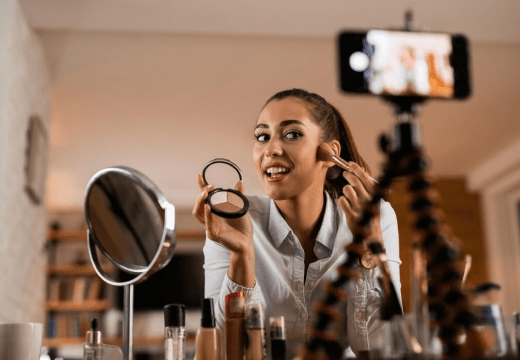In today’s digital era, brand awareness is more important than ever. With a vast amount of content shared on the internet every second, businesses are constantly competing for potential customers’ attention. For ecommerce and small business owners, creating a recognizable brand is not just a luxury—it’s a necessity. And there is no better place to build that brand awareness than on social media.
Social media has become a game-changer in marketing. With its ability to reach millions of users around the world, platforms like Instagram, Facebook, and TikTok allow businesses to increase visibility and engage with their audience on a deeper level. Whether you’re a new startup or an established e-commerce brand, the right social media strategies can make all the difference in enhancing brand awareness.
In this blog article, we’ll explore the best social media strategies that can help elevate your brand, engage your audience, and increase your online presence. From understanding brand awareness on social media to analyzing your performance, this guide will provide you with actionable insights to grow your brand’s visibility.

1. Understanding Brand Awareness on Social Media
What is Brand Awareness? Brand awareness refers to how well your target audience recognizes or remembers your brand. It’s a key performance indicator for any business, especially for small and e-commerce brands, as it measures how much your business is known in your market. The more people know about your brand, the more likely they are to purchase from you when the time comes.
How Social Media Contributes to Brand Recognition: Social media is one of the most potent tools for building brand awareness. It allows businesses to reach a global audience, interact with customers, and create a unique online identity. Through consistent posting, engaging content, and direct communication, businesses can amplify their presence, making it easier for customers to recognize and trust their brand.
The Role of Engagement, Consistency, and Audience Connection: Building brand awareness using social media is driven by engagement. Simply put, the more people interact with your content, the more your brand will be noticed. Engagement comes in many forms: likes, comments, shares, and even saving a post.
Consistency in posting is also vital. Regular activity helps keep your brand at the forefront of your audience’s mind. Furthermore, building a strong connection with your audience through personalized interactions will encourage them to engage more with your content, increasing your brand’s visibility.
2. Define Your Brand Identity and Audience
The Importance of a Strong Brand Voice and Visual Identity: Your brand identity is the backbone of everything you do on social media. It’s how you want people to perceive your business, and it includes your tone of voice, visual elements, and overall messaging. Developing a strong, consistent brand identity allows customers to easily recognize your business, whether it’s through your logo, color palette, or the type of content you post.
Identifying Your Target Audience: Knowing your audience is the first step toward boost your brand awareness. Understanding who your customers are, including their demographics, interests, and online behaviors, helps you craft content that resonates with them. For example, a fashion brand may target a younger audience on Instagram, while a B2B service might focus more on LinkedIn for professional networking.
Aligning Content with Audience Preferences: Once you have identified your audience, it’s crucial to tailor your content to their preferences. Are they visual learners who enjoy infographics? Do they prefer educational content or entertainment? When you align your content with what your audience wants, engagement improves, and brand recognition grows.

3. Choosing the Right Social Media Platforms
Each social media platform offers unique benefits depending on your business type, goals, and audience. Here’s a breakdown of the top platforms and how to utilize them effectively for brand awareness:
Instagram & TikTok: Both platforms are ideal for visual storytelling. Instagram’s use of posts, stories, and reels provides an excellent space to showcase your products, while TikTok’s short-form video content is perfect for trends, challenges, and viral marketing.
Facebook & LinkedIn: Facebook’s groups and LinkedIn’s professional network provide opportunities for community building and networking. Facebook is great for customer support and community interaction, while LinkedIn helps build credibility and authority in B2B markets.
Twitter: Twitter allows real-time engagement, where you can join conversations, share quick updates, and take part in trending topics. It’s ideal for businesses that want to be part of the ongoing social discourse.
YouTube & Pinterest: These platforms excel at long-form content. YouTube allows businesses to share tutorials, product reviews, and behind-the-scenes videos, while Pinterest is great for driving visual discovery, particularly for lifestyle, fashion, and design businesses.
How to Choose the Right Platform: To decide which platform fits your brand, consider where your target audience spends most of their time. You don’t have to be on every platform; instead, focus on the ones that align best with your business type and goals.
4. Creating High-Quality and Engaging Content
Content is the heart of social media marketing. For your brand to stand out, your content must be valuable, engaging, and shareable.
The Importance of Valuable, Shareable, and Interactive Content: Content that educates, entertains, or provides value will always attract more engagement. People love sharing content that resonates with them, whether it’s a funny meme, an inspiring quote, or a helpful tip. Shareable content broadens your reach and boosts brand awareness.
Types of Content That Boost Brand Awareness:
- Short-Form Videos & Reels: These are perfect for showcasing your products, behind-the-scenes moments, or jumping on trends.
- Infographics & Carousels: These are great for sharing educational content or key statistics that your audience will find helpful.
- User-Generated Content (UGC): Sharing customer reviews, testimonials, or content created by your followers builds trust and authenticity.
- Live Sessions & Q&A: Going live provides real-time interaction with your audience, making your brand more transparent and relatable.
- Memes & Relatable Content: Relatable, funny content often goes viral and can help your brand gain traction in a light-hearted way.
Consistency in Posting and Using a Content Calendar: Consistency is crucial in maintaining an active social media presence. A content calendar can help plan and organize your posts, ensuring that you’re regularly sharing relevant content to keep your audience engaged.

5. Leveraging Influencer Marketing
Influencers are potent allies in boosting brand awareness. They have established trust with their audiences, and by collaborating with them, your brand can gain access to a wider, yet targeted, audience.
Choosing the Right Influencers: The key to influencer marketing success is choosing influencers who align with your brand. Nano and micro-influencers often have more engaged audiences, while macro-influencers can help you reach a broader group.
Collaborations and Partnerships: Work with influencers to create co-branded content or sponsored posts that resonate with their followers. This helps extend your reach and build trust with your audience.
Measuring Influencer Marketing Effectiveness: Monitor engagement rates, referral traffic, and conversion metrics to track the performance of your influencer collaborations. This ensures the best return on investment (ROI).
6. Engaging with Your Audience and Building Community
Social media is a two-way communication tool. Engaging with your audience by responding to comments, messages, and reviews fosters a strong connection with your followers.
Strategies to Foster Community Engagement:
- Responding to Comments and DMs: Make your followers feel heard and valued by engaging with their comments and messages.
- Interactive Polls, Quizzes, and Challenges: These encourage participation and help foster a sense of community.
- User-Generated Content with Hashtags: Encourage followers to share their content and use a branded hashtag to help promote your brand.
- Leveraging Facebook Groups, LinkedIn Communities, and Twitter Spaces: Create dedicated spaces for your community to interact, share ideas, and engage with your brand.

7. Using Paid Social Media Advertising
Paid social media ads are an effective way to boost brand awareness and target specific audiences. Organic growth takes time, but with paid ads, you can accelerate your visibility.
Best Advertising Strategies for Different Platforms:
- Facebook & Instagram Ads: Carousel ads, story ads, and video ads can be highly effective in reaching your target audience.
- LinkedIn Ads: Great for B2B businesses. LinkedIn’s targeted ads can help you increase brand visibility in the professional world.
- TikTok & YouTube Ads: Both platforms excel at short-form video content. TikTok ads are great for younger audiences, while YouTube ads can help you target specific content types.
- Twitter Ads: Promoted tweets are a great way to engage in viral conversations and extend your reach.
Budgeting for Social Media Ads: Start with a small budget and test different ads to see what works best for your brand. As you gather insights, adjust your budget and Strategy accordingly.
8. Analyzing Performance and Optimizing Strategy
Social media marketing is an ongoing process. Tracking your performance is essential for optimizing your strategies.
Key Social Media Metrics to Track:
- Engagement Rate – Measures how people interact with your posts.
- Reach & Impressions – Tells you how many people saw your content.
- Follower Growth – Tracks how your audience is expanding.
- Click-Through Rate (CTR) – Measures the traffic driven to your website or landing pages.
Tools for Tracking Performance: Monitor your social media performance using tools like Meta Business Suite, Google Analytics, and Hootsuite. These tools provide valuable insights that can help optimize your Strategy.
Optimizing Content Strategy: Adjust your content strategy based on performance data. If certain types of content are performing well, create more of them. If certain platforms are bringing in more engagement, consider focusing more of your efforts there.
Boosting brand awareness is a continuous process that requires Strategy, consistency, and creativity. By implementing the right social media strategies, businesses can increase their visibility, engage with their audience, and create lasting connections that drive growth.
Remember, the key to success lies in knowing your audience, choosing the right platforms, and consistently producing engaging, valuable content. Start applying these strategies today, and watch your brand awareness soar.

